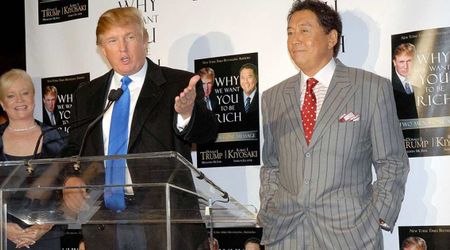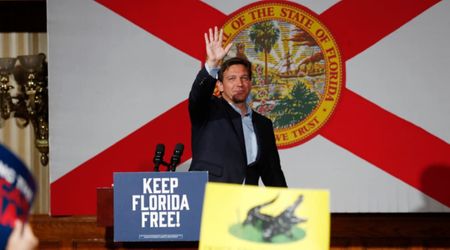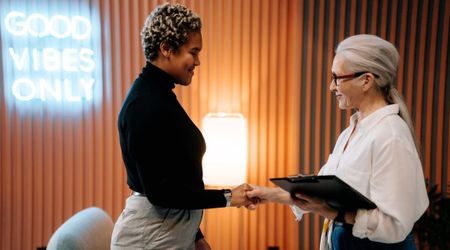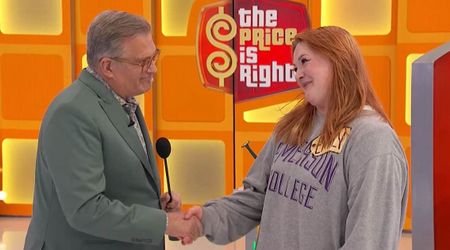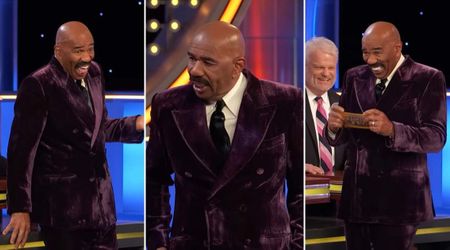From Marilyn Monroe to Coco Chanel; Here Are 10 Fashion Icons From the 20th Century

Style Icons of the 20th Century

Fashion in the 20th century both reflected and shaped culture—from flapper dresses of the Prohibition era to Kangol hats tied to the birth of hip-hop. It moved beyond a marker of social status to a tool for self-expression. These style icons showcased this transformative journey, and not only altered our clothing but revolutionized how we wear them. They embodied the evolution of fashion as a dynamic force deeply intertwined with the spirit of each era.
1. 1900s – Camille Clifford

In the early 1900s, the Gibson Girl, conceived and illustrated by artist Charles Dana Gibson, became an iconic symbol of the modern, independent American woman. With a tall and elegant demeanor, she represented societal shifts toward women's empowerment. Belgian-born actress Camille Clifford gained acclaim for personifying this aesthetic. The Gibson Girl was characterized by an hourglass figure, reflecting the fashionable silhouette of the time. Women's fashion embraced intricate updos and form-fitting dresses, accentuating exaggerated, S-shaped silhouettes. This trend mirrored the evolving roles and aspirations of women, capturing the spirit of a transformative era in which the Gibson Girl became a cultural touchstone for the changing dynamics of femininity and style.
2. 1910s – Paul and Denise Poiret

The 1910s, marked by wartime demands, ushered more women into the Western workforce, prompting significant shifts in fashion. Hemlines were raised to facilitate greater movement and dresses adopted a looser silhouette, eliminating the need for restrictive corsets. Often hailed as "The King of Fashion" during this era, designer Paul Poiret played a pivotal role in dismantling the corset's dominance. Introducing innovative styles like the "lampshade" tunic and chemise dresses, Poiret drew inspiration from his wife, Denise Poiret. She not only endorsed but also modeled his daring harem pants—a controversial choice, as pants were predominantly associated with men at the time. Poiret's influence marked a transformative period in women's fashion, liberating it from traditional constraints.
3. 1920s – Josephine Baker and Coco Chanel

Symbolizing the vibrant Roaring '20s, flapper fashion became iconic with dropped-waist dresses, shorter hemlines, sequins, and abundant fringe. Women's style embraced androgyny, featuring simple lines and looser fits. The flapper aesthetic even led to the adoption of undergarments known as step-ins, minimizing natural curves for a more "boyish" look. Jazz Age icon Josephine Baker epitomized the flapper style with her daring choices while French designer Coco Chanel played a pivotal role in popularizing the trend. Chanel, known for blending menswear-inspired designs, introduced the two-piece tweed suit, a timeless classic. Her work not only defined an era but also demonstrated that fashion could seamlessly combine style and functionality, especially for working women.
4. 1930s – Marlene Dietrich and Katharine Hepburn

In the 1930s, Western fashion witnessed a shift with dropped hemlines and elevated waistlines, emphasizing a more feminine silhouette. Despite this, the aftermath of the Great Depression prompted a return to conservative styles. Smart suits or dresses designed to resemble suits gained popularity, featuring padded shoulders and patterned day dresses. Marlene Dietrich challenged gender norms by defying the era's monolithic views of femininity, both on and off the screen, donning men's clothing, and normalizing androgyny. Similarly, actress Katharine Hepburn embraced an understated yet radical style, often opting for blue jeans or high-waisted slacks and button-down shirts, pioneering what would later be recognized as a quintessential American look.
5. 1940s – Cab Calloway

In the 20th century, men's fashion witnessed various iterations of suits and formalwear but the 1940s introduced the iconic "zoot suit." Characterized by long, oversized coats with padded shoulders, paired with high-waisted, wide-legged trousers, zoot suits originated in U.S. urban neighborhoods. They gained popularity through African-American performers in the jazz scene and became a symbol of style in the swing dance era. Influential figures like Louis Armstrong, Sammy Davis Jr., and Cab Calloway, renowned for his performances at Harlem's Cotton Club, embraced the zoot suit, turning it into a distinctive uniform for trendsetters during this vibrant period in fashion history.
6. 1950s – James Dean and Marilyn Monroe

In the 1950s, a distinct teenage culture emerged as young adults distanced themselves from traditional norms and parental expectations, shaping their own generational identity. Working-class teenagers embraced rebellious styles, embodied by actors like James Dean. Dean's iconic look in the 1955 film "Rebel Without a Cause," featuring a plain white T-shirt, a red nylon jacket, and jeans, came to symbolize a generation grappling with post-World War II angst and the onset of the Cold War. This counter-cultural style, popularized by figures like Dean and Marlon Brando, rejected the more formal fashion associated with the GI Generation. Meanwhile, Marilyn Monroe, with her wiggle dresses, one-shoulder gowns, and halter tops, offered young women of the decade an alternative ideal—representing sexual freedom and body positivity in a time of societal change.
7. 1960s – Audrey Hepburn and Jackie Kennedy

The 1960s witnessed an array of diverse fashion trends, ranging from "Space Age" style and Mod fashion to the hippie movement. Twiggy, the English model, epitomized futuristic styles with daring outfits, including shift dresses, miniskirts, and braless ensembles. On the other hand, Jimi Hendrix embraced the hippie aesthetic, donning bell-bottom jeans, embellished vests, vintage military jackets, and fringe. Audrey Hepburn, known for her simple and elegant style, subtly incorporated elements from these trends into her wardrobe. A muse to Hubert de Givenchy, Hepburn accessorized her specially tailored clothes with oversized sunglasses, ballet flats, and statement earrings. First Lady Jackie Kennedy, with her chic yet accessible style, connected with the public through fashion. Her wardrobe, featuring pillbox hats and elbow-length white gloves, spearheaded trends in women's fashion, including dress suits, trench coats, and capri pants.
8. 1970s – Diana Ross and David Bowie

The '70s, known as the "Me Decade" celebrated individuality and self-expression. Tube tops, flared jeans, and hot pants became wardrobe staples, reflecting a desire for confidence and freedom. For glamorous nights out, Diana Ross, Motown royalty, set the standard with sparkly jumpsuits and iconic big hairdos, epitomizing '70s glamour. Meanwhile, David Bowie, known for his transformative alter egos, notably Ziggy Stardust, challenged traditional masculinity with eccentric styles like platform shoes, one-legged jumpsuits, and dresses. His boundary-pushing performance attire left a lasting impact, capturing the spirit of a decade defined by bold fashion choices and the quest for personal expression.
9. 1980s – Princess Diana and Prince Charles

In the '80s, the concept of "athleisure" gained momentum as dancewear and sportswear transitioned into everyday fashion. The 1983 release of "Flashdance" and the jazzercise craze popularized bodysuits and leg warmers. Princess Diana emerged as an early champion of athleisure, effortlessly elevating a biker shorts and sweatshirt combo. Unlike the rest of the British royal family, she embraced mainstream fashion trends, taking risks during and after her marriage to Prince Charles. Simultaneously, Prince Charles left an indelible mark on fashion. Following in Bowie's footsteps but forging his own path, Charles was a maximalist using fashion for self-expression. Defying gender stereotypes, he incorporated womenswear into his wardrobe, featuring monochromatic outfits, ruffled shirts, and feather boas, leaving an enduring legacy in the fashion world.
10. 1990s – Michael Jordan and Aaliyah

Michael Jordan's influence on menswear in the '90s extended beyond his basketball prowess. The release of Air Jordan sneakers in the mid-'80s catapulted him into a fashion icon. Jordan's blend of sportswear and formalwear reshaped the perception of oversized power suits. He demonstrated how to dress them down by substituting formal shirts with T-shirts or crewnecks and opting for sneakers over loafers. The iconic '90s commercial slogan, "Be like Mike" resonated across various demographics, from athletes to school children. In the realm of streetwear, R&B singer Aaliyah left an indelible mark with her chic tomboy style. She effortlessly combined baggy jeans with crop tops or bandeaus, seamlessly blending hip-hop fashion with her unique feminine expression. Aaliyah's influence reverberated through the era's fashion landscape.
